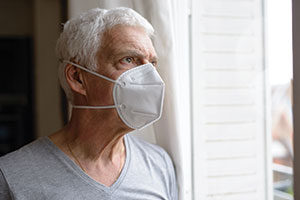Catching Fire: The Global Health Issue of Household Air Pollution (A91)
2:15-4:15 p.m. Sunday
Room 145 A-B (Middle Building, Street Level), Walter E. Washington Convention Center
Household air pollution from burning biomass is a known problem in developing nations, where food often is prepared over these fires. However, North America also has indoor pollution problems, particularly in homes near highways, with improperly ventilated gas fireplaces, or where wood is burned for heat. Speakers will examine health issues related to pollution during a Sunday symposium.
Presentations will track the causes of pollution and how the causes are being addressed around the world. Speakers will examine the latest research on the toxic effects of pollutants on lung cells and the development of interventions.
 “The session represents a combined effort of a lot of assemblies with a common interest in the environmental effects on lung health. It ranges from very basic mechanisms of disease to clinical and epidemiological aspects,” says Gregory Downey, MD, a session moderator.
“The session represents a combined effort of a lot of assemblies with a common interest in the environmental effects on lung health. It ranges from very basic mechanisms of disease to clinical and epidemiological aspects,” says Gregory Downey, MD, a session moderator.
“What many people don’t understand is that even in North America there is a significant component of indoor air pollution that contributes to lung diseases. In rural America, people keep their houses heated with wood stoves or gas fireplaces that are improperly vented. These contribute significantly to obstructive lung disease,” says Dr. Downey, professor and executive vice president of academic affairs at National Jewish Health, Denver.
The session will start with an overview of household air pollution, and each presentation will build on information from the previous presentation.
“Inflammatory Lung Diseases in Vulnerable Populations Exposed to HAP” will explain the epidemiology of HAP and present clinical observations. It also will trace the effects of particulate matter and gaseous byproducts from stoves on inflammatory disease that can lead to obstructive lung disease.
“Household Air Pollution Exposure Occurs in Developed Countries as Well!” will present data from a study of Caucasian, Hispanic, and Native American populations in the Southwest United States. Those populations are exposed to allergens and dust contained in pollutants.
“Studying Biologic Mechanisms of HAP-Induced Diseases” will analyze the effect of various pollutants on cells in culture, especially epithelial cells. Animal dung often is burned for fuel, and the resulting pollutants vary among animals and affect the levels of toxicity.
“The Role of Biomass Smoke in Respiratory Infections” will explore how exposure to biomass fuels makes people more susceptible to bacterial and viral respiratory tract infections. Those infections can contribute to an expedited decline in lung function.
“Translational Approaches to Understand the Effects of Biomass Smoke” will include an analysis of the chemical components of smoke from different environments and the effect of those components in small animal models.
“Does Exposure to Household Air Pollution Increase Cardiovascular Morbidity and Mortality?” will present a big-picture view of how indoor air pollution affects respiratory health. This will include the effect of gasoline and diesel fuel from highways on neighboring homes.
Speakers also will discuss the development of treatments and proactive efforts to prevent pollution. Many developing nations and global agencies are giving people better stoves and helping them improve ventilation in their homes. Education about proper ventilation is becoming more common in North America, Dr. Downey says.
“Several of the speakers will talk about how, based on the knowledge of signaling pathways that lung cells are exposed to, there are specific pharmacological interventions,” he says. “There are medications to try to limit the damage.”
